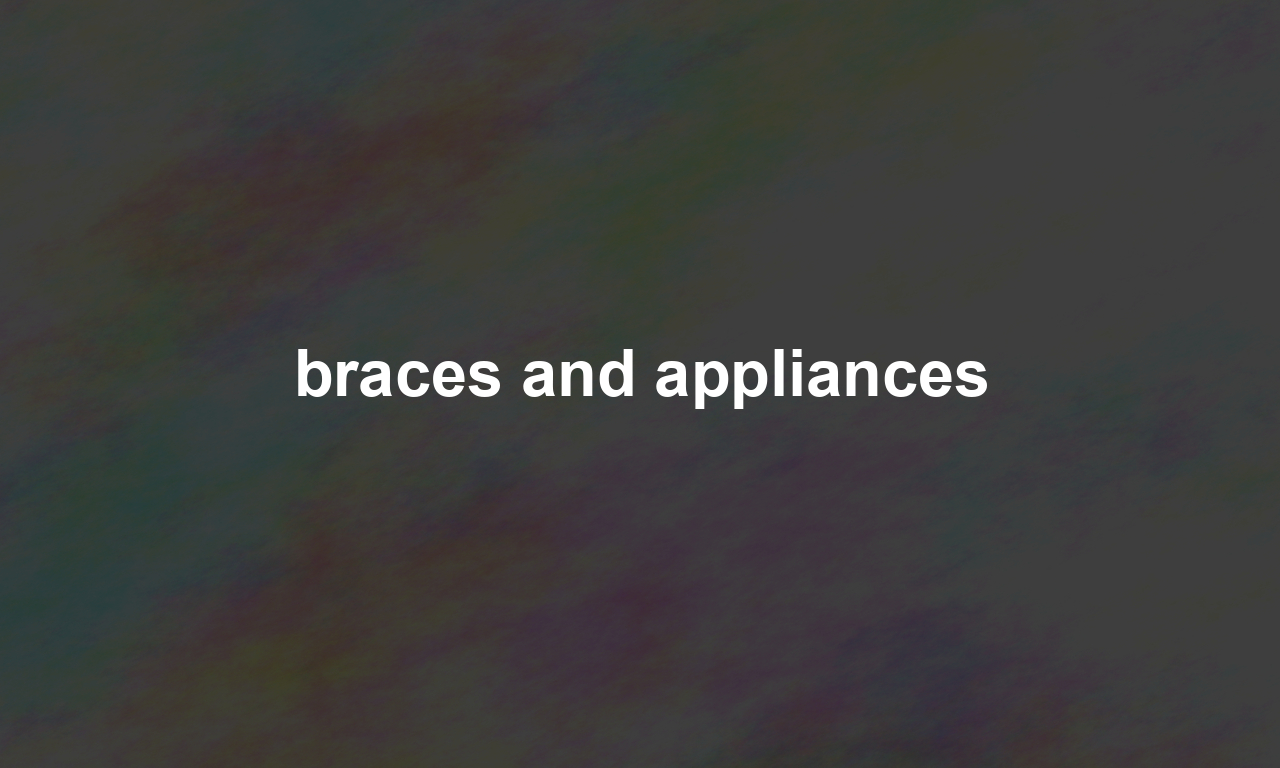Imagine waking up one day to flash a movie-star smile. For many, this dream becomes a reality through the use of braces and appliances. In this comprehensive article, we’re diving deep into the world of orthodontics, exploring how these devices work their magic, answering your burning questions, and providing expert tips to ease your journey toward a perfect smile. By the end, you’ll be equipped with the knowledge to make informed decisions about your dental health.
Understanding Braces and Their Benefits
Braces aren’t just for teenagers anymore. They are a go-to solution for individuals of all ages looking to correct misaligned teeth and improve oral health. But why are they so effective?
The Basics of Braces
Braces work by applying continuous pressure over time to slowly move teeth in a specific direction. As the teeth move, the bone changes shape to accommodate the new position.
- Metal Braces: This traditional form consists of metal brackets and wires. They are known for their durability and effectiveness in treating severe cases of misalignment.
- Ceramic Braces: Similar to metal braces but made of tooth-colored ceramic, making them less noticeable.
- Lingual Braces: These braces are placed on the back of the teeth, making them invisible from the front.
- Invisalign: Clear, removable aligners that are custom-made for comfort and easy cleaning.
Braces aren’t just cosmetic. Correcting misaligned teeth can:
– Improve chewing efficiency
– Enhance speech clarity
– Reduce risks of dental injuries
– Provide long-term dental health benefits
Exploring Orthodontic Appliances
Not everyone knows that braces are only one piece of the orthodontic puzzle. Orthodontic appliances play a crucial role in preparing the mouth or finishing the touches to achieve that perfect smile.
Types of Orthodontic Appliances
Orthodontic appliances are devices used to influence the position of teeth and jaws. Here are some common ones:
- Retainers: These are used post-braces to maintain the teeth’s new position. Without retainers, teeth can shift back to their original place within a short time.
- Palatal Expanders: These devices are used to widen the upper jaw to make room for crowded teeth or correct crossbites.
- Headgear: Often used in growing children to correct severe bite issues by guiding the growth of the jaw.
- Space Maintainers: These are used when a child loses a tooth prematurely. It keeps the space open until the permanent tooth erupts.
Each of these appliances has its unique role and purpose, contributing to an individualized treatment plan.
The Orthodontic Journey: What to Expect
Understanding the process can alleviate any anxieties about getting started with braces or appliances.
Initial Consultation
Your orthodontist will evaluate your teeth, take X-rays, and create a treatment plan tailored to your needs. This is a great time to ask all your questions and learn about the options available to you.
Getting Your Braces
The process begins with thoroughly cleaning your teeth, followed by attaching the braces with dental adhesive. The first few days may involve some discomfort as your mouth adjusts to the new appliance.
Regular Adjustments
You’ll need to visit your orthodontist every 4-6 weeks for adjustments. These appointments are crucial for tightening the braces, changing wires, or replacing the bands. Each adjustment takes you one step closer to your dream smile.
Post-Treatment: Maintenance is Key
Once the braces come off, retainers are essential. They ensure the teeth stay in their new positions. Your orthodontist will provide specific instructions on how to care for and when to wear your retainer.
Common Concerns and Solutions
Dealing with Discomfort
Experiencing pain or discomfort is common after adjustments. Over-the-counter pain relievers and orthodontic wax can help. Eating soft foods and rinsing with salt water can also alleviate soreness.
Managing Emergencies
If a wire breaks or a bracket comes loose, don’t panic. Contact your orthodontist’s office as soon as possible. In the meantime, orthodontic wax can help keep the loose parts from causing further irritation.
Food and Braces
Certain foods can damage braces, so it’s essential to avoid hard, sticky, or chewy foods. Focus on braces-friendly foods like yogurt, soft fruits, and cooked vegetables. Maintaining a healthy diet also promotes overall oral health.
Boosting Your Braces Journey
Orthodontic treatments are an investment in your future. Here’s how you can make the most of it:
- Maintain Oral Hygiene: Brushing and flossing are crucial. Consider using a water flosser or interdental brushes to access hard-to-reach areas.
- Regular Dental Visits: Continue routine check-ups and cleanings with your dentist to prevent cavities and gum disease.
- Stay Committed: Follow your orthodontist’s instructions strictly. Whether it’s wearing rubber bands or retainers, consistency is key.
Remember, patience is vital. Orthodontic treatments can take months or even years, but the result is worth the wait: a confident, healthy smile.
For more detailed information on orthodontic treatments, visit the American Association of Orthodontists or explore WebMD’s guide on braces.
Isn’t it exciting to think about the day you’ll beam at yourself in the mirror and see a flawless alignment? With braces and appliances, that dream smile is more achievable than ever.

